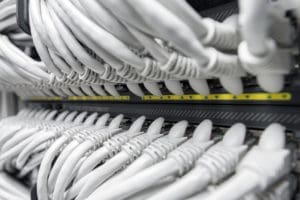 These are unprecedented times. McKinsey & Company may have said it best when referring to the upending of our economy and our lives due to the pervasion of the coronavirus:
These are unprecedented times. McKinsey & Company may have said it best when referring to the upending of our economy and our lives due to the pervasion of the coronavirus:
“It’s rare that a business is prepared for a pandemic like the coronavirus. The massive scale of the outbreak and its sheer unpredictability make it challenging for executives to respond. At the same time, higher volatility — from geopolitics, economic cycles, climate risk, and many other forces — has become business as usual for many companies.”
Given such rare and unusual circumstances, IT leaders, managers, and workers could all use some logical guidelines to stimulate their own thinking and help make decisions at a time when an oversupply of fear and uncertainty could prevail. Here are six guidelines to shape your own thinking and make better decisions:
Maintain strict security configurations
At a time when so many are turning to remote working, the vulnerability to security breaches — intentional or not — are great. Therefore, it’s important for any firm engaged in remote working to be vigilant and work with their MSP to ensure measures are taken to maximize the security of a network.
Pay close attention to the number of remote workers
Recently, the federal government warned its own agencies to request workers cut back on their activity to use less data and, if necessary, cut back on their work to prevent network traffic from being overloaded. They also may throttle back data exchange from high-bandwidth activity, such as streaming video. Policies that don’t greatly inhibit workflow while preserving the viability of networks in unprecedented times is a best practice to institute now.
Implement network traffic analysis
With so many people utilizing networks and working remotely, it’s important to monitor the visibility of the network and be aware of ingress and egress points. This informs network administrators and leadership about the traffic.
It also ensures that traffic is not entering and exiting a network at inappropriate places or penetrating a firewall when they should not be. It may also provide some data for IT and functional leaders to make quick decisions on changes needed to accommodate or expedite network traffic flow.
Keep your network infrastructure ready for whatever is required
Supercomputing may or may not be a feasible option for an enterprise. If it is, service providers and IT clients need to ask if their IT infrastructure is ready to utilize supercomputing.
This is not an ordinary concern, but recently, the federal government eased the use of supercomputers and collaborated with IBM to offer supercomputing capability (16 supercomputers in total) to be used by industry to enable use where and when needed. In fact, the White House Office of Science and Technology Policy most recently introduced the COVID-19 High Performance Computing Consortium, a partnership that includes IBM, the Energy Department national laboratories, Google Cloud, Amazon Web Services, Microsoft, and more.
Focus on critical workers and functions
Identify who is critical, and if applicable, who must interact with other critical players to carry out important operations such as keeping your customers’ supply chain flowing, their business operations moving, and conduct interactions with federal, state, and local governments as needed. For example, relying on technology and just-in-time supply chains may require designated workers to access certain sites and assets to ensure continuity of functions.
Communication vehicles must be preserved and maintained to engage in discussions with other critical infrastructure workers and fully consider the implications of business operations within the appropriate scale required. IT leaders must assess and align access to critical infrastructure workers to perform their duties. This may require urgent or updated policies to be developed and implemented.
Minimize face-to-face interactions
This is most needed for firms where employees do not ordinarily telework or work remotely. Employers and IT management must identify which employees are able to telework, consistent with company policy and guidance.
Under normal conditions, certain employees routinely and intermittently work remotely. However, now employees may be working at home in response to the COVID-19 outbreak. This may mean relying on a business continuity plan or other emergency policies for urgent and abnormal operations.
This pandemic will not last forever, but no one knows yet when it will end. Given such uncertainty, a best practice is to rely on sound and logical practices to manage the networks that your MSP is responsible for, efficiently utilize IT assets and resources, and protect your customers’ employees with sound management and leadership decisions.
Our digital and well-wired world is vastly different from what existed during earlier pandemics and outbreaks. Networks and IT infrastructure enable some, if not all, business operations to continue and function. The challenge now is to harness the horsepower of such assets and capabilities to make things work safely and sensibly.
Photo: amophoto_au / Shutterstock
